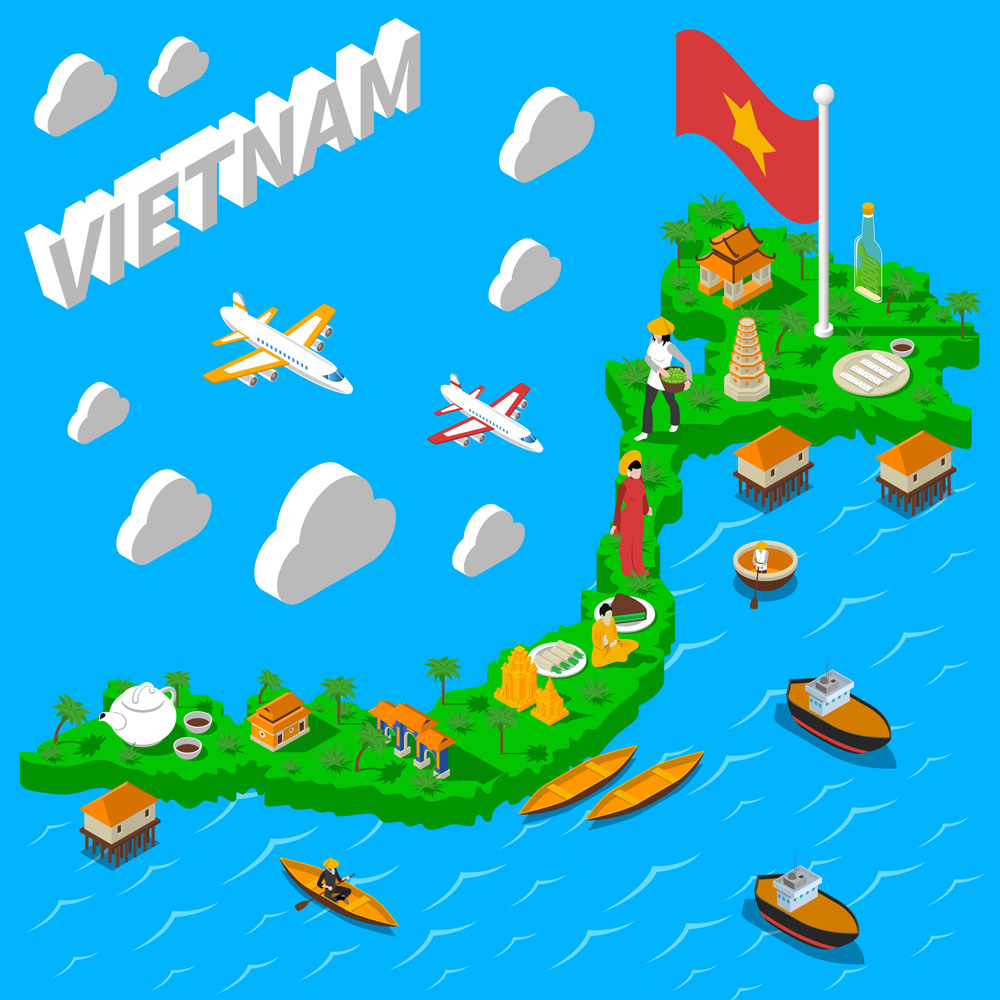Since August 2017 – The time of the establishment of the Vietnam Saffron Joint Stock Company, Saffron in Vietnam, from an unknown name, has become a large market that has attracted the attention of many Vietnamese consumers.
The story of Vietnam saffron begins with a gift. A Vietnamese lady got acquainted with saffron by chance through a gift to improve her health from her Iranian friend.
A friend gave her this gift to improve her skin damage due to workplace stress, and then she started planning to import saffron to her country. Though she didnt know that there are many different tyoes of saffron like Super Negin Saffron, Pushal Saffron, Negin Saffron, Sargol Saffron and many others!
Saffron Nano Cream: Vietnam Saffron
A Vietnamese manufacturer has launched a type of hand and face cream containing saffron using nanotechnology.
Besides Saffron Nano cream, a prominent product searched by many people today has many other products extracted from saffron pistil such as day cream, night cream, makeup remover, facial cleanser, etc.
After researching, the manufacturer discovered that saffron had been widely used as a valuable ingredient in the world’s cosmetic industry. But in Vietnam, the application of saffron in cosmetic products is still new. Therefore, Ms. Tam determined and researched with a team of experts and researchers to launch the Saffron Nano product line, with saffron as the main ingredient.
Uses of the product according to the manufacturer:
- Whitens intensive skin
- Provides moisture for youthful, smooth skin
- Removes melanin to help reduce pigmentation and whiten skin
- Prevents the formation and development of acne, pustules …
- Reduces sebum for a smooth, healthy, and firm skin
- Applies a hot burn to quickly close the wound
Old Newcomer
Although East Asia, and especially the Indian Ocean and Southeast Asia countries, has a long history of using spices, saffron has not yet entirely found its place in recipes and prescriptions. Due to the nascent saffron industry in Vietnam, the people of this country see it as a luxury item for beauty, healing, and giving gifts, rather than using it traditionally.
The importance of using spices and herbs, especially saffron, became clear to everyone during the Covid outbreak. In Vietnam, this issue manifested itself in various forms. During the epidemic season, people became increasingly aware of the importance of saffron for health, not only because of the high demand and sold-out for health care but also because of the many large and small showrooms that companies constantly opened.
Saffron in the Diet of the Vietnamese People
The Vietnamese accepted saffron like any other spice, and even more so, and consider it a royal spice. This seductive plant is also found in the recipes of Vietnamese cuisine. Especially in foods in which rice is the main ingredient, saffron plays a pivotal complementary role. One of the most popular options on the restaurant menu is the Vietnamese Paella, known worldwide as Paella Vietnamita.
Paella Vietnamita
Paella has Spanish roots, but the popularity of the Vietnamese version of this dish is currently not much less than its original. In the West, it is also known as the Asian-style Paella. Skilled chefs of the East use Vietnamese ingredients such as rice vermicelli, Thai basil, chives, and mint, along with Spanish ingredients such as lima beans and roasted peppers in that.
Almost Recipes
Cooking this food is a very specialized job, and our purpose here is not to deal with the complete recipe, but we want to take a brief look at it; The story of the preparation of a Paella Vietnamita meal has several episodes that must go hand in hand.
Sofrito sauce should be prepared by emulsifying cilantro, vegetable oil, garlic, onion, salt, and very little saffron over medium heat. We will see the main use of saffron in the next steps of this recipe.
For the paella rice seasoning, 1/3 cup of sofrito should be cooked in oil for one minute, then coconut milk, Sazon con azafrin, salt, and chicken bouillon should be added and stirred. The rice is then added to the boiling water, and the seasoning would be added to it. Then it should be stirred and cooked until the seasoning is completely absorbed by the rice.
To prepare the meat section, after pouring a little oil and frying a little onion, Chinese lap Cheong sausage, mild pork sausage, and edamame beans will be added and stirred to fry. Cooked paella rice and sambal chili garlic will be added and stirred. Here, rice can be served and decorated in a bowl.
Soy-marinating pork carnitas is the final stage that lasts for a day. Saffron would be combined with the soy sauce, sugar, mirin, oyster sauce, mushroom soy, green onions, star anise, cloves, peppercorn blend, cinnamon sticks, and ginger slices, and they should be mixed well. After separating the fats, the sliced pork would be placed in a pan, and the mixture should be added to it so that all the meat is soaked in the liquid. After adding the dried black mushrooms and fragrant leaves, the dish should be covered with foil and placed in the refrigerator overnight, and tomorrow it should be baked in the oven at a suitable degree for a sufficient time.
… Paella Vietnamita! Bon Appetit!





Mrs. Nguyen
I’m really intrigued by the Saffron Nano cream mentioned in the article. Can you provide more information on where to purchase these saffron-based skincare products in Vietnam?
Nhien
I’ve always been a fan of saffron’s culinary uses, but learning about its applications in skincare and cosmetics is fascinating. Are there any specific benefits of saffron in beauty products that I should know about?
John
I’m interested in trying out saffron in my cooking, especially the Paella Vietnamita. Can you share any additional tips or recommendations for making this Vietnamese-style paella?